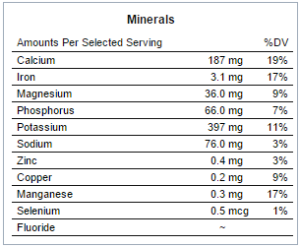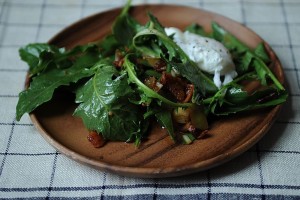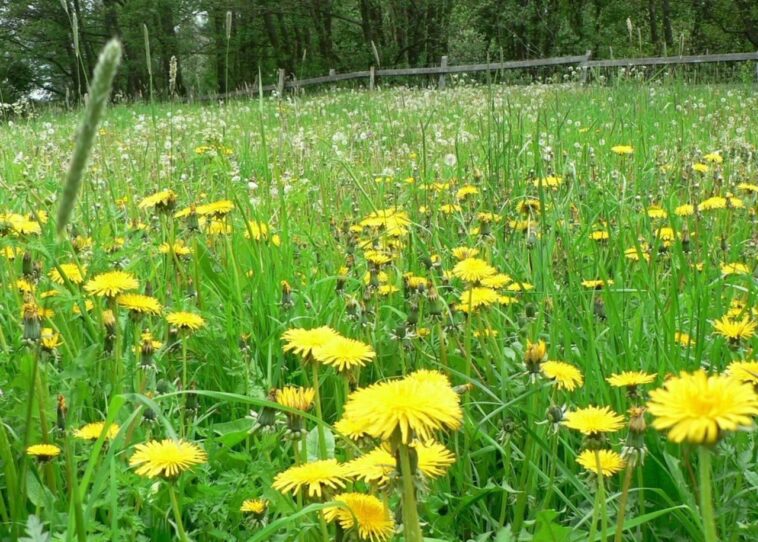A Weed Or A Nutritious Culinary Delight?
While many people treat it like an invasive weed and do everything they can to eradicate it, the dandelion is one of the healthiest and most versatile wild plants you’ll find in your backyard. The leaves are vitamin rich, containing generous amounts of vitamins A, C and K. Everything, from the flower all the way down to the root, is edible. And, dandelions also happen to be delicious.
Ralph Waldo Emerson’s perspective on weeds is certainly true for the Dandelion.
“What is a weed? A plant whose virtues have not yet been discovered.”
Below you’ll see the nutritional profile of 100g of raw dandelion leaves. The taste of dandelion resembles a mildly bitter green like arugula. You can eat them fresh in salads and they’re an amazing stir fry addition.


How to eat dandelions
Dandelions can be eaten raw, cooked, or dried. The leaves, flowers, and roots can all be consumed.
Here are some ideas for how to eat dandelions:
- Add dandelion greens to salads or sandwiches. Dandelion greens have a slightly bitter flavor, but they can be balanced out with other ingredients, such as sweet dressings or fruits.
- Sauté dandelion greens with garlic and olive oil. This is a simple and delicious way to prepare dandelion greens.
- Make dandelion tea. Dandelion root tea is a popular herbal tea that has a number of health benefits.
- Add dandelion flowers to salads or baked goods. Dandelion flowers have a slightly sweet flavor and can add a nice touch to dishes.
- Roast dandelion roots. Roasted dandelion roots have a nutty flavor and can be eaten as a snack or side dish.
The leaves are most tender and tastiest when they are young. This happens in the spring but also in summer as the plant tries to rebound after being cut or pulled. You can add them to soup in great abundance. Or you can prepare them Italian style by sautéing with a little olive oil, salt, garlic and some hot red pepper.
 If you prefer a southern fare, eat the bright, open flower heads in a lightly fried batter. You can also make the famed “dandelion wine” with the flowers by fermenting them with raisins and yeast. Many foraging guides also suggest roasting the dandelion root, grinding it, and brew it like coffee. It’s an acquired taste. You might want to have some sugar on hand. Check out the 10 recipes posted on the its plant profile page(including dandelion wine!).
If you prefer a southern fare, eat the bright, open flower heads in a lightly fried batter. You can also make the famed “dandelion wine” with the flowers by fermenting them with raisins and yeast. Many foraging guides also suggest roasting the dandelion root, grinding it, and brew it like coffee. It’s an acquired taste. You might want to have some sugar on hand. Check out the 10 recipes posted on the its plant profile page(including dandelion wine!).
In addition, if you’d like to grow a leafy culinary variety, you can buy seeds from this seller on Amazon. Your neighbors might think you’re crazy, but it’ll be a wonderful opportunity to educate them on wild edibles.




GIPHY App Key not set. Please check settings